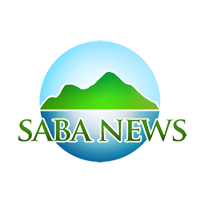The first phase of the goat control project has produced tangible results. With the removal of close to 1,300 wild goats, Saba’s nature is visibly recovering thanks to the work of the invasive species hunters.
Nature areas that before the goat removal project were bare, are now green with grass growing and young saplings starting to come up. From May to December last year, the hunters removed a total of 1,295 goats, mostly from remote areas, steep hillsides and cliffs. Several local goat owners have also been very active in removing goats.

Five zones were tackled during the first phase: the Mount Scenery National Park, the area around the waste management facility near Fort Bay, the Core Gut/Wiber Hole/High Cliff area near Old Booby Hill, Parish Hill/Great Hill/The Gap near The Bottom, and the Wash Gut/Hole in the Corner area beyond Giles Quarter.
The hunters started in the National Park because this is a protected area where the natural vegetation was being threatened by the roaming goats, causing erosion and adversely affecting the park’s biodiversity.
The National Park and most of the other zones that were tackled were the more remote areas where the local hunters don’t visit as often or are considered more dangerous areas. This was done so that the local hunters could continue hunting their own goats while the hunters were at work.
The removal of the goats has alleviated the pressure on the villages, where goats had been eating people’s gardens, creating a nuisance and posing a safety hazard on the roads. Removing the animals near the waste management facility and Parish Hill helped to alleviate the problem of rocks coming down on Fort Bay Road.
The Public Entity Saba is working with the Ministry of Agriculture, Nature Management and Food Quality (LNV) on the planning for the second phase where the invasive species specialists will return to complete the project. The Public Entity Saba is committed to this project to remove wild goats, while at the same time encouraging responsible animal husbandry, and investing in reforestation and agriculture.
As part of the incentive to promote responsible animal husbandry, fencing will again become available for those owners who want to put their animals in pens or restore/enlarge their pens. The high cost of feed and hay is being looked into for a structural and sustainable solution.
The price of food and hay has gone up a lot, causing a major financial burden on persons keeping goats and other livestock in a responsible manner. The government said it was aware of the hardship that this group faces. The matter of having a veterinarian on the island is also being looked at as there currently is no permanent veterinarian on Saba.
GIS Saba

 Saba News News and Information from Saba Island, Dutch Caribbean
Saba News News and Information from Saba Island, Dutch Caribbean
